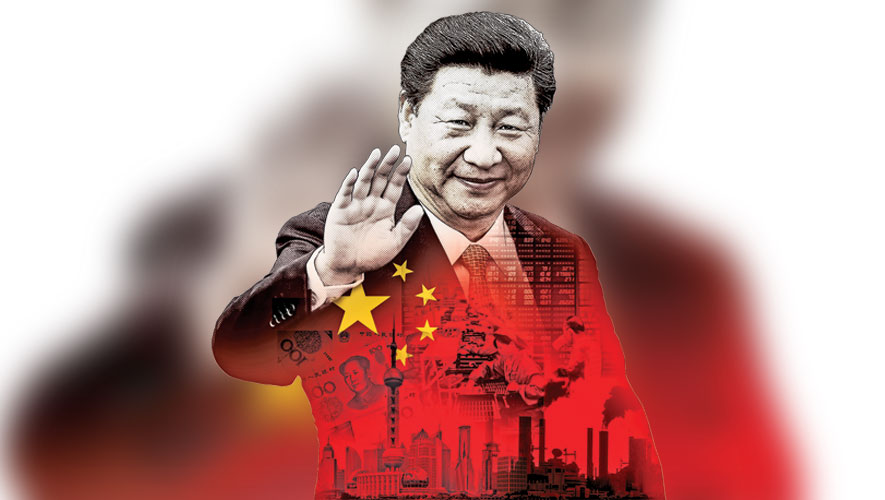From 2000 to 2010, China ushered in its Golden Decade and became the world’s second-largest economy.
For the latest Cambodian Business news, visit Khmer Times Business
Looking back on this period, Chinese analysts proud of the nation’s rise have often tried to conclude that a “Chinese model” is applicable throughout the world.
In brief, the “Chinese model” generally refers to a development model that promotes rapid urbanisation growth through large-scale infrastructure investment and accelerated development of the real estate industry under the guidance of the government, thus achieving an economic leap.
With the expansion of the Belt and Road Initiative (BRI) and the expansion of China’s influence, the “Chinese model” began to go abroad and it is now being applied in other countries.
At the same time, the natural defects and inevitable problems of the “Chinese model” have also attracted international attention. Therefore, what role the “China model” should play in the BRI is a question worth pondering.
The “Chinese model” is actually a product of the integration between traditional economic theory and China’s national conditions. Today, this model has its own problems and shortcomings, such as industrial hollowing-out, increasing debt, soaring social costs, lack of staying power in economic growth and so on.
Under such circumstances, the application of this model to other countries with different social development environments would obviously lead to more serious problems.
International impact
Take Ethiopia as an example, the problems caused by Chinese companies simply copying the “Chinese model” have had a big international impact.
In recent years, while maintaining rapid growth, Ethiopia’s trade deficit has widened rather fast, with its import volume reaching four times of its export volume.
There is also a serious shortage of foreign exchange in Ethiopia, with government debt accounting for nearly 60 percent of its gross domestic product (GDP). The International Monetary Fund (IMF) has now assessed that Ethiopia is facing a higher risk of debt distress. Some of these problems were mostly because of the “Chinese model” being copied and applied without considering the local conditions.
At present, half of Ethiopia’s $26 billion in foreign debt comes from China and most of these debts were used in massive infrastructure projects.
From 2006 to 2015, Chinese companies provided more than $13 billion in loans to Ethiopia in many areas, including roads, railways, and industrial parks. For instance, in the $4 billion Addis Ababa–Djibouti Railway, the Export-Import Bank of China provided loans of $3.3 billion.
However, the problem is that the return rate on the project at the market level is not optimistic and there are a number of problems such as power shortages and local protests.
Adverse effect
The China Export and Credit Insurance Corporation, the credit insurer of the project, has previously stated that it has lost more than $1 billion on the Addis Ababa–Djibouti Railway project. The root cause is that the project is not based entirely on market demand, lacking comprehensive facilities and a complete transportation network.
Under this circumstance, if the Addis Ababa–Djibouti Railway is unable to achieve profitability in the long run, it will most likely end up like Hambantota Port in Sri Lanka, which will adversely affect the overall BRI strategy.
More importantly, what is happensing to the Addis Ababa–Djibouti Railway is not an isolated case.
Currently there are 400 Chinese investment projects with an amount of more than $4 billion in Ethiopia, many of which are located in industrial parks and real estate areas. In the fiscal year 2017/2018, Chinese investment in Ethiopia accounted for 24 percent of its national data. Addis Ababa Light Rail ($475 million) and the six-lane ring road ($86 million) are all Chinese investment constructions.
There is no doubt that the “Chinese model” has stimulated Ethiopia’s rapid economic growth in recent years, but this model of economic growth through investment and infrastructure projects is clearly problematic.
Ethiopia has a weak industrial base, limited market space, incomplete industrial support and a certain degree of political hidden dangers and political conflicts.
The costly infrastructure projects have exceeded the local development level to some extent and cannot be integrated with the local market. Neither can these projects be integrated with appropriate industrial types and scales, making it difficult to achieve self-sufficiency in the economy and promote industrial prosperity and employment opportunities.
At the same time, with the substantial investment in infrastructure and real estate, the resulting debt problems, land disputes, income differentiation, and social conflicts will affect the continued development of various projects.
In the end, not only the economic cooperation between the two countries would be affected: It would also cause unnecessary international pressures on the BRI.
Final analysis conclusion:
Therefore, the “Chinese model” cannot be used as it is in China in the process of advancing the BRI. China must correctly understand the differences in national conditions of different countries and adapt to local circumstances.
In particular, China should pay attention to the matching of infrastructure with the local industrial structure, with the focus being encouraging the Chinese small and medium enterprises (SMEs) to carry out market-principle inclusive industrial cooperation.
Considering that Chinese SMEs generally do not have sufficient overseas experience, the Chinese government needs to provide them with supporting services and training mechanisms to enhance the diversity and overall quality of China’s economic cooperation in other countries.
Only in this way can China truly realise the strategic goal of promoting the BRI international economic cooperation and avoid the unpleasant situation caused by applying the “Chinese model” mechanically.




